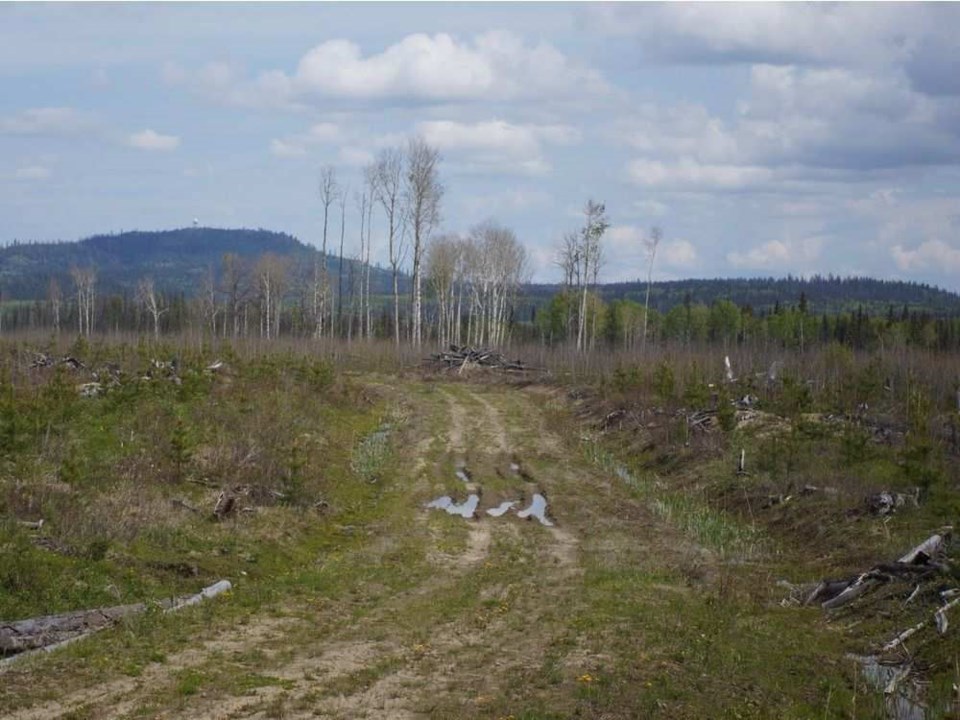B.C.'s trapping industry is facing multiple threats, including falling prices for fur and the general decline of their target species.
An increase in devastating forest fires, over-harvesting of timber and aerial spraying of herbicides over newly planted forests are combining to shrink viable forest habitat for fur-bearing creatures, trappers say.
Once Canada's economic engine, the market for fur in Europe and North America has largely succumbed to the grisly messaging of animal rights groups such as People for the Ethical Treatment of Animals.
Fur remains popular with increasingly affluent buyers from Russia and in China - the fur industry there is worth $22 billion - but the vagaries of fashion and waning economic growth in those nations have depressed prices for pelts for the past several years.
The recent diplomatic tiff caused by the arrest of Chinese businesswoman Meng Wanzhou by Canadian authorities has hammered the sales - and the share price - of Canada Goose, whose fur-trimmed parkas had been wildly popular in China.
A market report by Jeremiah Wood of Trapping Today predicts that the price for beaver pelts ($10 to $13 each) and wild mink ($5 to $10 each) will remain depressed in the years to come as both can be replaced by cheap farmed mink.
Bobcat fetches $350, but fewer than 250 are trapped each year in B.C. The 14,000 martens trapped here each year sell for $70 each.
The price for lynx pelts - about $70 - is "disappointing" considering the amount of work required to catch and process the animal, said Wood.
Uncertainty in the fur market has prompted several major auction houses to postpone the first pelt auctions of 2019, he said.
But trappers say the larger and potentially more devastating threat to the industry is the collapse of B.C.'s forest ecosystems.
Over-harvesting of timber is making a serious dent in the viable habitat for fur-bearing animals and their prey, said Brian Dack, president of the B.C. Trapper Association.
"Our wildlife populations are in serious decline everywhere," he said. "The only thing anyone seems to care about is our ability to grow trees."
A 2012 study by then-UNBC master's candidate Michael Bridger - now a wildlife biologist for the Ministry of Lands, Forests and Natural Resource Operations -- used interviews with biologists and experienced trappers along with catch data to quantify the effects of logging on three fur-bearing species.
Where human effects on the environment increased over the study period, optimal habitat for lynx, fisher and marten declined by about 80 per cent.
The ministry says those concerns will be addressed by a new wildlife management and habitat strategy now being developed with First Nations that will include input from various concerned groups, including trappers.
Dack worries that the roads that service the resource sector and areas of deforestation by wildfire are not accounted for when the Forests Ministry calculates the annual allowable cut for timber harvesting.
About 620,000 kilometres of gravel roads provide access to the back country for the forestry and resource extraction industries.
Five of the worst fire seasons since 1950 have come in the past decade and more than 10,000 square kilometres burned in 2017 alone, according to the Forests Ministry.
"If you don't reduce the cut, the amount of timber left to harvest is smaller and smaller, but the amount of timber they take is the same," he said.
In January 2018 - after the 2017 wildfires - the Chief Forester issued new guidance for foresters that wildlife and their habitat needs must be considered when planning forestry activities," according to the ministry.
Dack is also concerned about the effects of aerial herbicide spraying over B.C. forests. Roughly 10,000 hectares of newly planted forest was treated with glyphosate in 2017.
The spray kills aspen - a favourite food for beaver - and wipes out many other broadleaf plants in the process. The result is a single-crop pine forest without structure or food for wildlife, said James Steidle of Stop the Spray B.C.
The high-profile struggles of B.C's vanishing caribou herds and the southern resident killer whales are being felt just as keenly by fur-bearing creatures, said Dack.
"When they spray that area is totally devoid of wildlife. You've killed the deciduous plants, there's no berries, there's no aquatic life, there's nothing to support life," he said.
The industry supports up to 1,300 part- and full-time licensed trappers, plus First Nations trappers, who do not require a licence. There are an estimated 3,500 active trappers in B.C. and around 2,600 trap lines, about half of which are held by First Nations.
Many of those jobs are in the most remote reaches of the province.
About 25,000 fur-bearing animals - mainly marten, lynx, beaver, coyote, weasel and squirrel - are harvested for their pelts by licensed trappers with an average annual value of about $1.6 million over the past five years. That's down about 11 per cent from the average annual catch between 2010 and 2013, according to provincial government figures.
Nonetheless, the trapper's association trains about 300 new entrants in the tricks of the trade each year and the ministry considers trappers a conservation resource.
"Regulated trapping plays an important role in the ecology and conservation of fur-bearers," the ministry said in a statement. "Some jurisdictions that have outlawed trapping are now struggling to manage fur-bearer populations, especially where population issues emerge within communities."
Dack maintains trappers do good service to the province. Licensed trappers harvest 1,500 coyotes and more than 200 wolves each year at no cost to the taxpayer.
Wolves prey on rapidly dwindling moose, caribou and elk herds - especially their young - across northern B.C. Coyotes are a threat to fawns of bighorn sheep, deer and pronghorns, along with domestic sheep and lambs, according to B.C.'s fur-bearer management guidelines.



